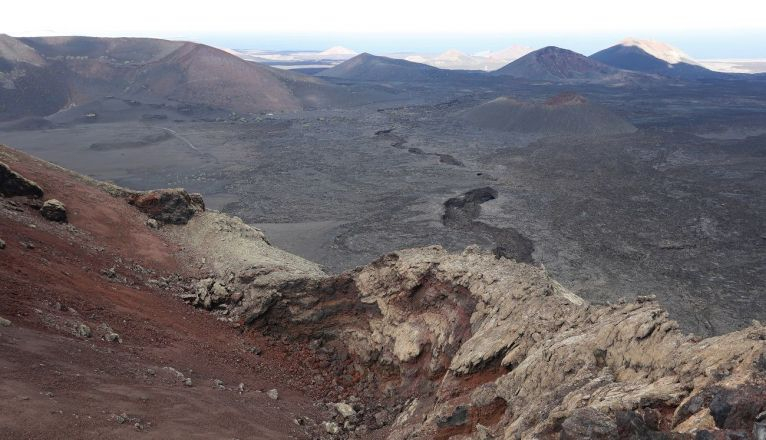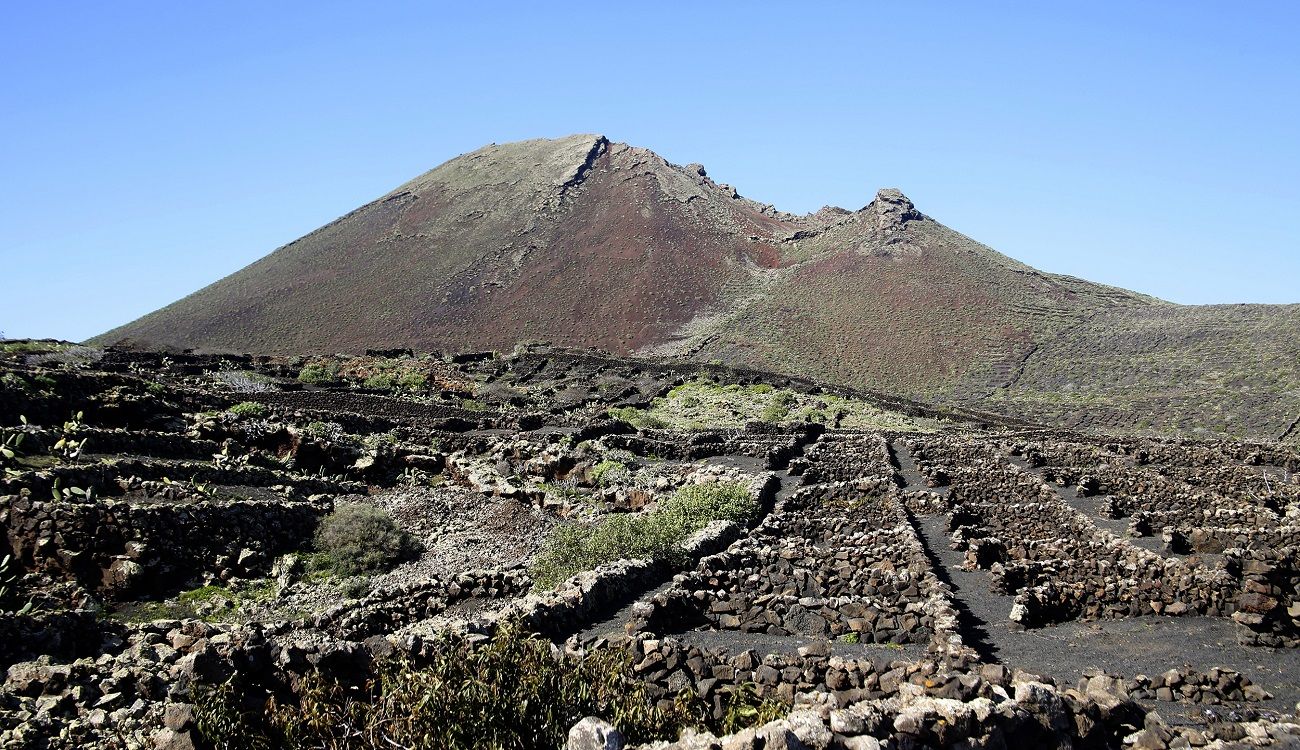Lanzarote has earned its reputation as a volcanic island for good reason. This small piece of land is home to more than 100 volcanoes, spread throughout its geography, especially in the southern area.
The last volcanic eruption dates back to September 1, 1730, and lasted more than 5 years in Timanfaya. However, nowadays, many volcanoes have been adapted so that everyone can enjoy their peculiarities and history.
1. Volcán de la Corona
In Haría, there is one of the most popular volcanoes in Lanzarote, La Corona, a 609-meter-high lava formation that has a simple hiking route, but with a certain slope.
It is important to mention that this path, which lasts approximately 2 hours, does not lead to the highest point, since getting there involves going around the volcano, which is not recommended due to the dangerous track.
Before starting the path, you can leave the car next to the church of the small town of Ye, and a few meters away you will find a sign that indicates the beginning of the way.
It is rather flat, with fig and prickly pear crops surrounded by stone walls to protect them from the wind. After this part, an ascent begins along a rocky slope that is relatively easy to climb, but on which you have to be careful to avoid slipping.
Once at the top, you will enjoy the reddish crater of the volcano, about 450 meters in diameter, and a postcard view of the north of the island. Finally, to make the descent, it is enough to return along the same path.
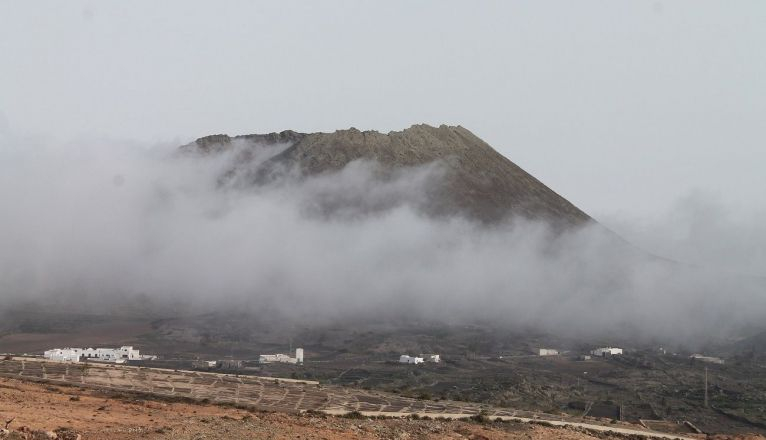
2. Caldera Blanca and La Caldereta
With a height of more than 450 meters and a crater of 1,200 meters in diameter, one of the most impressive volcanoes on the island is Caldera Blanca, located in Tinajo.
The route consists of about 10 kilometers and can be done in four hours on average. The starting point is a parking lot located on a crossroad called “Camino del Cráter”, near the Ermita de los Dolores.
From there, you will start a path of just over 1 kilometer (about 25 minutes) zigzagging through a solidified sea of lava, until you reach La Caldereta, another smaller volcano. Once passed, and following the signs, you will end up reaching the base of the famous Caldera.
The ascent does not imply much technical difficulty, and from the heights, you will be able to observe the contrast of the white of the volcano with the black of the sea of lava, as well as its immense crater.
However, for those more adventurous who wish to see the Timanfaya National Park, they can go around the crater to the left until they reach the highest point of the volcano.
It is important to mention that you have to be cautious during this last part of the route, since strong winds can make the climb difficult. Therefore, it is always recommended to go up when there are good weather conditions and little wind.
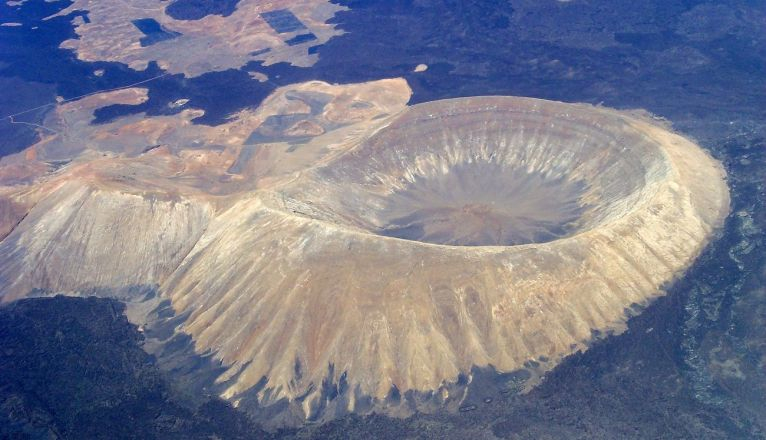
3. Volcán del Cuervo
If you are looking for a more relaxed route that you can do as a family or with older people, El Cuervo, located in Tinajo, is the best option.
It is a circular hiking route, without elevations, that surrounds this peculiar dark-colored 380 meters high volcano.
Along the way, you will enjoy the landscape, made up of an extensive mass of petrified lava and many other volcanoes such as Montaña Colorada in the background. You will also have the opportunity to enter the crater itself and see the flora that has risen from the ashes, as well as the occasional Lanzarote lizards.
From the car park, it takes just 20 minutes to reach the base of the volcano and, once there, you will have two options. Either you go around it entirely, for that purpose you will have to walk to the left, or you go directly to the crater using the path to the right. In both cases, the round trip from the car park is approximately one hour.
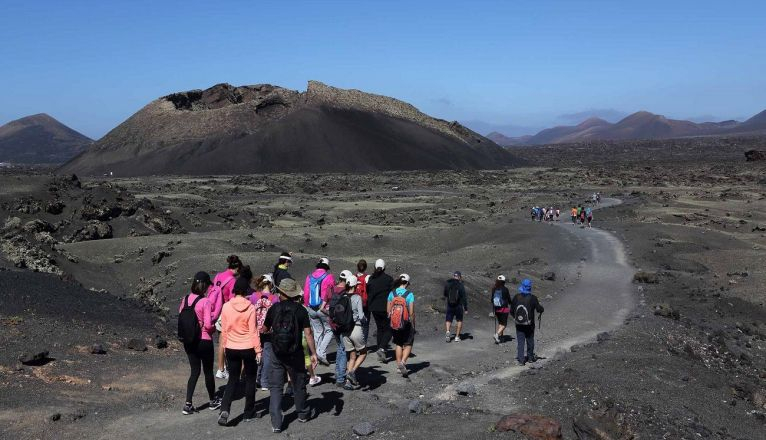
4. Montaña Colorada
In front of El Cuervo you find Montaña Colorada, a volcano that owes its name to its reddish tones, from the iron oxides of lava. It should be noted that this volcano was one of the last ones to form during the eruptions’ period.
The route to the top begins with a path that ascends transversally. It is important to mention that it is a more complex route than the previous one, with 465 meters of unevenness, where the ground also tends to have the occasional loose stones, slowing down the ascent.
Once at the top of Montaña Colorada you will be able to see the crater of the volcano and enjoy the views of Timanfaya National Park and volcano El Cuervo.
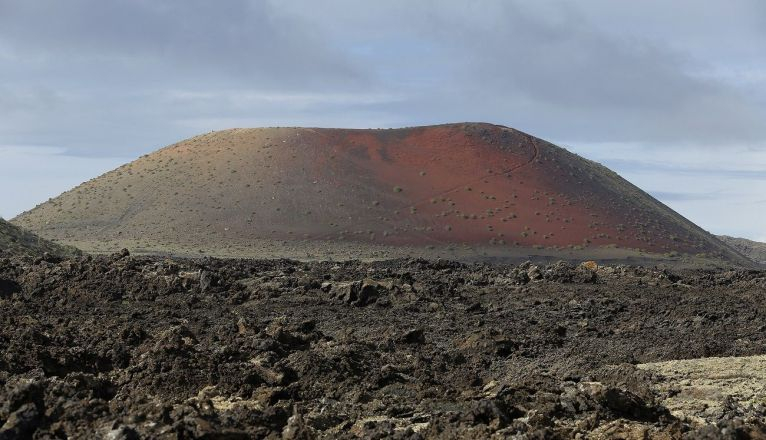
5. Montañas del Fuego
The best known volcanic route in Lanzarote is probably Montañas del Fuego, within the Timanfaya National Park, which is home to up to 25 volcanoes, which raised after the eruptions that took place between 1730 and 1736.
Located between Tinajo and Yaiza, this route is the only one that cannot be done on your own, because it is mandatory to hire a guided tour to take you by bus or by foot to visit the volcanoes. Admission includes parking, geothermal exhibitions, and a bus tour between a volcanic landscape.
During the tour you will be able to enjoy reddish formations that look like planet Mars, dark volcanic cones and the odd touch of green corresponding to the lichens that have managed to prevail over the lava.
However, for the intrepid ones who wish to walk among volcanoes and closely observe these landscapes, always with a guide, they can take either the Tremesana route, about 2 kilometers long, or the Coastal route, a path parallel to the sea, both of them free, but with prior reservation.
